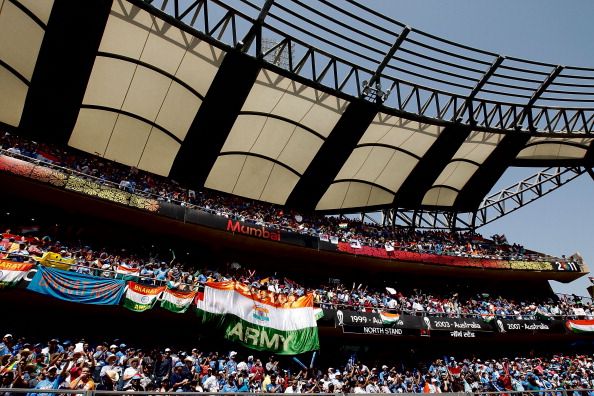
The Coliseums of modern cricket - A story of four stadiums
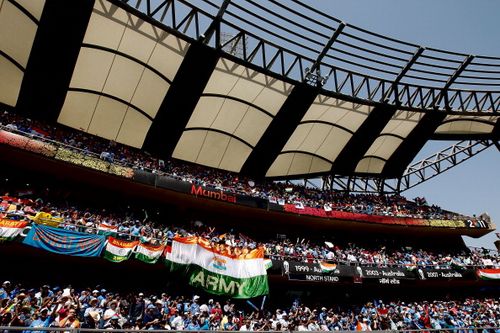
If I were a cultural theorist, with a special interest in the vicissitudes of the post-colonial imagination, this piece would have been titled The Arena as Theatre of Myth Creation – Narratives/Voices from Cricket Stadiums in South Asia. But the closest I’ve come to hearing voices in cricket stadiums in South Asia is scouring YouTube for videos of Indian and Pakistani cricketers exchanging what learned commentators of the gentleman’s game refer to as “pleasantries”, in choicest Punjabi. Now if you are so inclined, there’s a starting point for your well-balanced, dispassionate and intellectually fruitful study outlining the tension between the civic and linguistic models of nationalism. But I am not so inclined, so I will write a biased, cloying and footnote-less piece about cricket stadiums in India (and one in Sri Lanka), with a special emphasis on train journeys. Now, I promise that all four of you who are still reading this piece are in for a treat.
Now, I’m as far from being a cricketer as Harman Baweja is from being a Bollywood superstar (shadow cricket or dream cricket, of course, doesn’t count because if it did, I’m a dashing all-rounder with a penchant for hooking Imran Khan for six to the square leg boundary). However, playing arenas in general, and cricket stadiums in particular, hold me in their thrall. Now, maybe there is something in those explanations of why spectators are drawn to sport – there is something primal in a contest, the fluidity of movement, the aspirational value in watching humans beings in prime physical condition going about their business and so on. But the fact is that I prefer to seek out stadiums when they’re empty. For an idle fellow like me, an empty stadium presents a spectrum of possibilities. I can walk around the perimeter of the Jawaharlal Nehru in Kochi, catch a glimpse of the green carpet from the gap in between stands and fantasize about diving on the mat to save a crucial run in a cliffhanger against South Africa. Sitting on the Marine Drive promenade and watching the reflection of the floodlights (as they’re being tested on the eve of a big game) at the Brabourne manufacturing a bridge across the Backbay, I can drown in technicolour images and sounds of a home crowd calling out my name as I walk in with Master to begin a chase of 300-odd. Sure, I like watching cricket live, but that exercise leaves one with no time to entertain delusions of the like mentioned above. The action unfolding before your eyes then serves as a fetter on the imagination, for it is a continuous and rather emphatic affirmation of the Naipaulian adage of the world being what it is.
So the reason behind pointing out what I have in the first paragraph is to entitle me to make all sorts of generalizations that the nuanced world of critical scholarship is not at liberty to make. Cricket grounds, then, are repositories (to use the word so beloved of the well-balanced, dispassionate, and intellectually fruitful tribe) of a national culture. At the Gabba, bare-chested Australians swig Foster’s and address each other as “mate”. At the Wanderers, bare-chested South Africans swig Castle Lager and address each other as whatever it is that is the South African equivalent of mate (if di Caprio’s character in Blood Diamond is to be believed, it is a somewhat nasal utterance that sounds suspiciously like the haiinn of the North Indian hinterland which, in its turn, is most memorably recalled in the baritone of Mr. Bachchan). In the grounds around the Caribbean, you’ll hear the calypso and drawls of yo maaan and at the SCC in Colombo, there will be swinging to the tunes of baila and symbolic thunderstorms. At a game in India, there is a raucous, heaving mass of humanity, a riot on the senses. In Pakistan, well, there is no cricket in Pakistan.
But because I sometimes like to slip into the garb of the phony art critic and design connoisseur that seems to be everywhere these days, I will ask – but what about aesthetic? And now our generalizations enter murky territory. Should stadiums by the sea have open plans, allowing uninterrupted sea views and salty breeze to waft across? And to ask the question that seems to be haranguing every linen-shirt wearing, salt-and-pepper haired architect worth his minimalist salt, do our cricket grounds “blend into the natural environment” they’re built in, so to speak? Well, the short answer to that is no, and the long answer can be found in the pages of any lifestyle magazine. Stadiums in India are usually functional behemoths. It is all very well to imagine lounging around on a grassy bank, sipping Kingfisher and wearing Ray-Bans on a December afternoon at the Wankhede, but the fact of the matter is that you can only imagine. And if we are to interpret the idea of stadium construction blending into the environment too literally, then the bizarre desert-camp style tents at the Chepauk and Adelaide would be more suited to the Barkatullah Stadium in Jodhpur, which last hosted a One Day when Ajit Agarkar was India’s strike bowler.
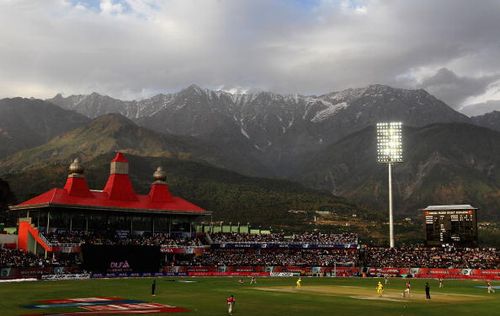
Now while we’re on the topic of stadiums, culture, natural environment and other such things that would usually be thrown under a category that business journalists would ordinary describe as “leisure” or “freedom from economics”, we would do well to mention the HPCA Stadium in Dharamshala, which sits pretty atop the list of atmospheric stadiums. See its unmistakable pagoda-inspired turrets, overseen by the ancient, sentinel-like Himalayas, as you drive down from McLeodganj on winding hill-roads, and you will understand how the ground and its surroundings can melt even N. Srinivasan’s AGM-hardened heart. And if you are the kind of mind that revels in the opportunities for ethico-moral calisthenics that is provided by situations/facts/ideas/circumstances/consequences that are best described as ironical – for this is a stadium located in a region whose inhabitants’ religious and lifestyle choices make a compelling case for the Spartan, yet hosts matches of one of the world’s richest sports leagues, a financial and marketing juggernaut that has spawned an entire culture of crony capitalism around it – then you will have enough food for your intelligent thought.
But the stadium really after my heart is the one in Galle, Sri Lanka. In the days when I’d watch cricket on TV – almost as an afterthought for I’d follow the fortunes of Manchester United and Argentina with militant discipline – I’d come to be vaguely fascinated by the stadium in the shadow of the ramparts of an old fort, complete with a stately clock-tower. I felt a pang when I read that the stadium had been ravaged by the tsunami of late 2004. It has since been re-built, but much of the cricket in Sri Lanka has moved to the swanky new complex that the Chinese have helped build in Mahinda Rajapaksa’s constituency of Hambantota, and another ground in Pallekele. I’d always suspected that it would be a pity if Galle didn’t host too much international cricket, and my visit sometime back only confirmed my suspicion. Just outside the ramparts of the fort that has at various times been occupied by the Dutch, Portuguese and the English, the stadium lies between the old town and the new, tempting one to lapse into one of those sport-as-bridge metaphors which were common in hagiographic accounts of cricket in countries prone to civil/ethnic/international strife.
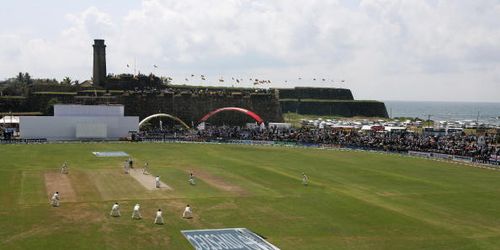
Soon after getting off the bus from Colombo, I noticed patches of green behind grates that were mostly plastered with posters bearing the grin of that old fox Murali. As I made my way around the perimeter, I was struck by the ground’s accessibility – it gave that air of an arena where everyone is invited. Yet, nothing prepared me for the view from the fort’s ramparts. Climbing up on the walls adjacent to the clock-tower, I had an unhampered view of both the stadium and the sea on my left. And I dreamt the dream of the adventurers and traders from far-off Arabia, of Sinbad and those who followed, making their way to this coast, to this land of cinnamon and pearls, to the land they christened Serendib. And watching the spinners turn the ball away from the batsmen on the grass lawns at the foot of the fort, a stone’s throw away from the stadium, I dreamt their dreams of sharp turn aided by the gentle ocean breeze, dislodged bails, one-handed catches taken at forward short leg.
My most intense stadium moment, however, came in February 2011, when India were playing New Zealand at the Chepauk in a friendly just before the World Cup. I was interning with a start-up then, and my boss and I were on a train, getting back from a meeting somewhere near Thiruvanmayur. The stadium is on the route, and it so happened that just as we crossed the stadium, I caught a glimpse (through the gap between two stands) of Master helping a delivery that was straying down leg-side to the fine-leg boundary. The next moment, with the stadium behind us, I heard a roar as the ball reached the ropes. In that spontaneous reverberation that vaguely carried with it the intractable tremble of history – of matches played and heroes made and a language we all speak – I revelled for a brief, glorious moment, convinced that there is no need to understand sport or why it holds the place it does in the lives of our doomed fellowship.
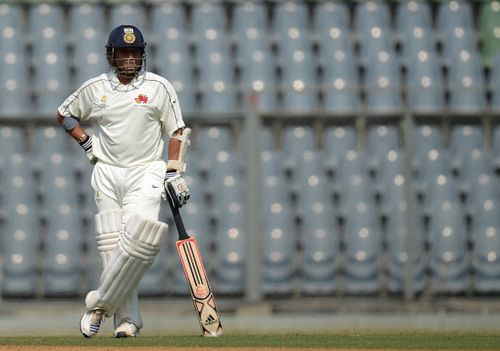
Cricket as nirvana aside, I am forced to contend with the quality of stadiums that evokes dreams unfulfilled and histories lurking in the background of the banality of truth. Only recently, I was sitting in front of a computer screen in an office in Nariman Point, while, just about a kilometre away, at the Wankhede, Master was putting on a show for Mumbai against a Rest of India attack. Rather than put my head and heart to the task of figuring whether an open offer had been triggered by the acquisition of shares of company B, by my firm’s client, company T under the Takeover Regulations, I found myself constantly refreshing the Cricinfo scorecard, as if that singular act would convince the tail-enders to hang in there so that I could troop to the Wankhede the next morning and watch Master bat in the flesh, a gladiator in his private Coliseum by the sea. But naturally, that was too much to ask for and the tail-enders perished one by one, once again giving us a lesson in the loneliness of genius. As I gazed wistfully at the hulking presence of the Wankhede from the window of the slow train to Borivali that night, I thought of the insurrection between my warring selves, of ambition and talent, dream and desire, and how some revolutions are never completed.